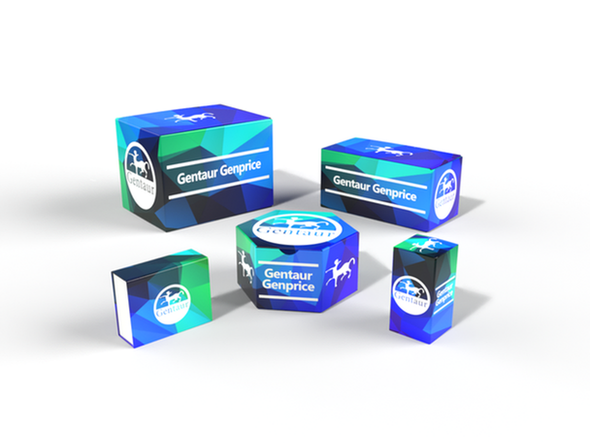740
Human Ras-related C3 botulinum toxin substrate 1 (RAC1) ELISA Kit | AE24560HU
- SKU:
- 740-AE24560HU
- Availability:
- Usually ships in 5 working days
Description
Human Ras-related C3 botulinum toxin substrate 1 (RAC1) ELISA Kit | AE24560HU | Gentaur UK, US & Europe Distribution
Species Reactivity: Human (Homo sapiens)
Abbreviation: RAC1
Alternative Name: MGC111543; MIG5; TC-25; p21-Rac1; migration-inducing gene 5|ras-related C3 botulinum toxin substrate 1|rho family; small GTP binding protein Rac1
Application: ELISA
Range: 0.156-10 ng/mL
Sensitivity: 0.054 ng/mL
Intra-Assay: ≤4.2%
Inter-Assay: ≤8.3%
Recovery: 0, 97
Sample Type: Serum, Plasma, Other biological fluids
Detection Method: Sandwich
Analysis Method : Quantitive
Test Principale: This assay employs a two-site sandwich ELISA to quantitate RAC1 in samples. An antibody specific for RAC1 has been pre-coated onto a microplate. Standards and samples are pipetted into the wells and anyRAC1 present is bound by the immobilized antibody. After removing any unbound substances, a biotin-conjugated antibody specific for RAC1 is added to the wells. After washing, Streptavidin conjugated Horseradish Peroxidase (HRP) is added to the wells. Following a wash to remove any unbound avidin-enzyme reagent, a substrate solution is added to the wells and color develops in proportion to the amount of RAC1 bound in the initial step. The color development is stopped and the intensity of the color is measured.
Product Overview: Rac1 is a GTPase which belongs to the RAS superfamily of small GTP-binding proteins. Members of this superfamily appear to regulate a diverse array of cellular events, including the control of cell growth, cytoskeletal reorganization, and the activation of protein kinases. Two transcript variants encoding different isoforms have been found for this gene. This mutant did bind to POR1 and it induced membrane ruffling and transformation. A second RAC mutant, which bound PAK but not POR1, induced JNK activation but was defective in inducing membrane ruffling and transformation. The authors concluded that the effects of RAC on the JNK cascade and on actin polymerization and cell proliferation are mediated by distinct effector functions that diverge at the level of RAC itself.
Stability: The stability of ELISA kit is determined by the loss rate of activity. The loss rate of this kit is less than 5% within the expiration date under appropriate storage condition. The loss rate was determined by accelerated thermal degradation test. Keep the kit at 37°C for 4 and 7 days, and compare O.D.values of the kit kept at 37°C with that of at recommended temperature. (referring from China Biological Products Standard, which was calculated by the Arrhenius equation. For ELISA kit, 4 days storage at 37°C can be considered as 6 months at 2 - 8°C, which means 7 days at 37°C equaling 12 months at 2 - 8°C) .






